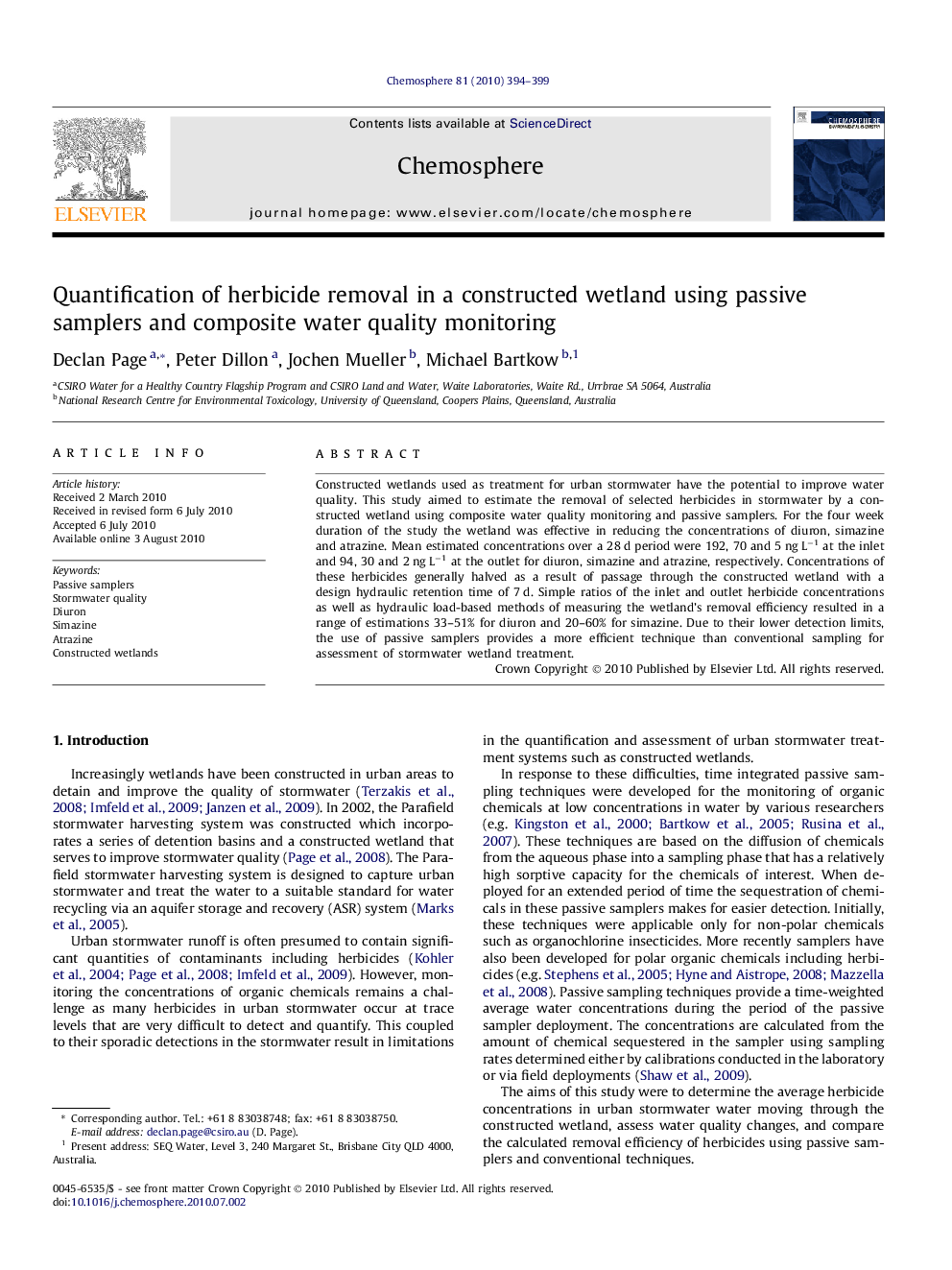| Article ID | Journal | Published Year | Pages | File Type |
|---|---|---|---|---|
| 4411327 | Chemosphere | 2010 | 6 Pages |
Constructed wetlands used as treatment for urban stormwater have the potential to improve water quality. This study aimed to estimate the removal of selected herbicides in stormwater by a constructed wetland using composite water quality monitoring and passive samplers. For the four week duration of the study the wetland was effective in reducing the concentrations of diuron, simazine and atrazine. Mean estimated concentrations over a 28 d period were 192, 70 and 5 ng L−1 at the inlet and 94, 30 and 2 ng L−1 at the outlet for diuron, simazine and atrazine, respectively. Concentrations of these herbicides generally halved as a result of passage through the constructed wetland with a design hydraulic retention time of 7 d. Simple ratios of the inlet and outlet herbicide concentrations as well as hydraulic load-based methods of measuring the wetland’s removal efficiency resulted in a range of estimations 33–51% for diuron and 20–60% for simazine. Due to their lower detection limits, the use of passive samplers provides a more efficient technique than conventional sampling for assessment of stormwater wetland treatment.
